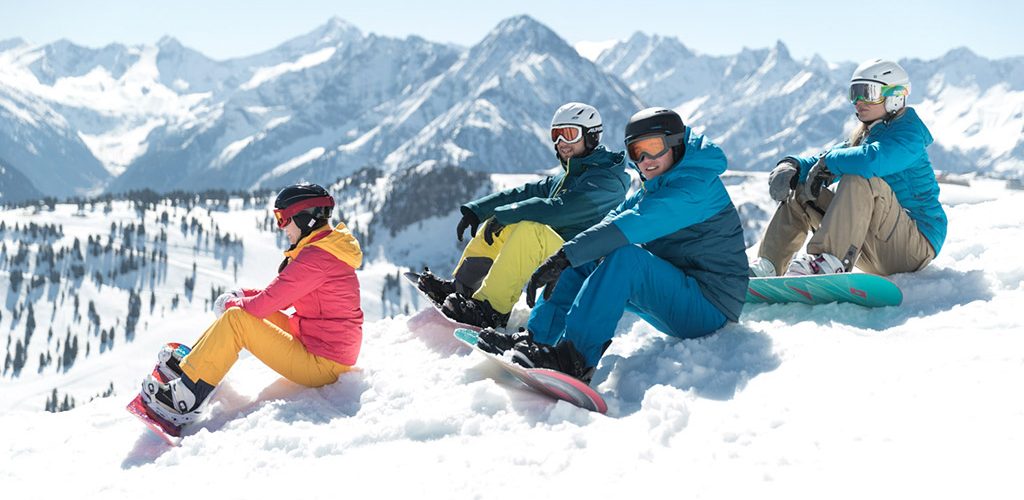Most of us agree that there are few things in the world that can beat the pure joy that winter sports give to us.
There’s the pure mountain air, the spectacular views, the wonderful feeling of skiing or boarding over crisp, freshly groomed snow or through soft newly fallen powder. But it’s important to know How To Stay Safe When Skiing.
It’s all too easy to let the fun and excitement of getting on the slopes stop you from thinking fully about How To Stay Safe When Skiing or how how to stay safe generally out in the great outdoors.
After all, most of us ski in winter environments which only a few decades ago most people would never venture in to in winter. These days we have great equipment, wonderful warm clothing and the lifts to whisk us up to the heights, but even so it is still being on a high mountain in winter, so it’s best to always take simple steps to stay safe, whether you plan to stay on the groomed piste or head off in to a freeride paradise. SnowTrex provides a list of tips and measures to help you stay safe making your way down the mountain.
Here are five key things to consider to help you have a stress and worry free, wonderful winter sports holiday.
-
Know Your Limits
We all have certain levels of fitness and often when we go on a ski holiday we suddenly go from not doing much physical activity and being at a low altitude to being active all day in the mountain air at altitude, possibly with some alcohol thrown in for a lunchtime beer or vin chaud. Ideally you should try to be as ski (or board) fit as you can before your holiday by working up to it with a specially tailored exercise regime to build physical strength where you need it. But however fit you are its important to be sensible and be realistic about what you can achieve and how far you should push yourself. Things can change fast in the mountains and if you’re feeling exhausted and unable to fully concentrate on what you’re doing those dangers rapidly multiply.
-
Know Where You Are
Having a thorough knowledge of where you’re skiing or boarding is always a big help. Get to know the piste map before you arrive, download the app that tracks you on the mountain (offered free by many larger resorts) and take the orientation tour (also often offered free by the resort at the start of the week). Check slope and weather conditions before and during your day on the slopes so you know what to expect and what’s coming in terms of weather and slope conditions. Make sure you know what to do if things go wrong – the numbers you need to call in the resort and country you’re in. In the unlikely event they do go wrong, remember to stay calm and keep a clear head.
-
Know the Rules of the Slopes
The International Ski Federation (FIS) publishes the ’10 Commandments of Skiing’ which is a little like the Highway Code for the ski slopes. There are top tips like remembering to check the slope above you before you move off after a stop or join a slope and, when you stop on a slope, make sure you are clearly visible from above, not just beyond a rise where a skier coming down can’t see you.
-
Wear a Helmet
There have long been arguments about whether wearing a helmet really helps in a bad accident, or makes skiers feel ‘invincible’ so they actually ski more recklessly than they would otherwise. But what studies there have been, and what the universal advice from medical experts is, is that wearing a helmet means you are less likely to really hurt yourself if your head hits something hard. So that’s why more and more people – and these days by far most people – wear them on the slopes. In some European countries including Italy and parts of Austria helmet wearing is compulsory for children up to various ages and more and more resorts insist adults in ski school wear helmets too.
-
Respect Mother Nature
Always respect nature, particularly if you plan to head off the groomed slopes and in to off piste terrain. There are plenty of things to consider on any slope though – make sure your skin and eyes are protected from the direct glare of the sun – which is magnified as it reflects off the snow as well as hitting you direct from the sky, so wear good eye protection and strong skin protection cream. Make sure you have clothes that will keep you warm enough – particularly at the extremes – your fingers, toes – where frostbite can creep in if you are not wearing adequate protection, and the top of your head where most of your body heat can be lost.
Heading off the groomed slopes, make sure you know what you’re doing. You need to take an avalanche awareness course, you need to train in off piste technique and you need to be fully equipped with transceiver, shovel, pole and maybe an airbag backpack – things you’ll know when you take the course! You’ll also know how important it is to check and know avalanche danger signs and many other weather warning matters. In most cases in fact it is best to ski or board with a professional guide who will know these points and how they manifest themselves in the resort you’re visiting better than anyone.
Finally, make sure your travel insurance covers you skiing or boarding off piste, many policies that aren’t specially designed for skiers are invalid when you do.
For more information on how to practice safe skiing, please take a look at this extensive safety checklist!


